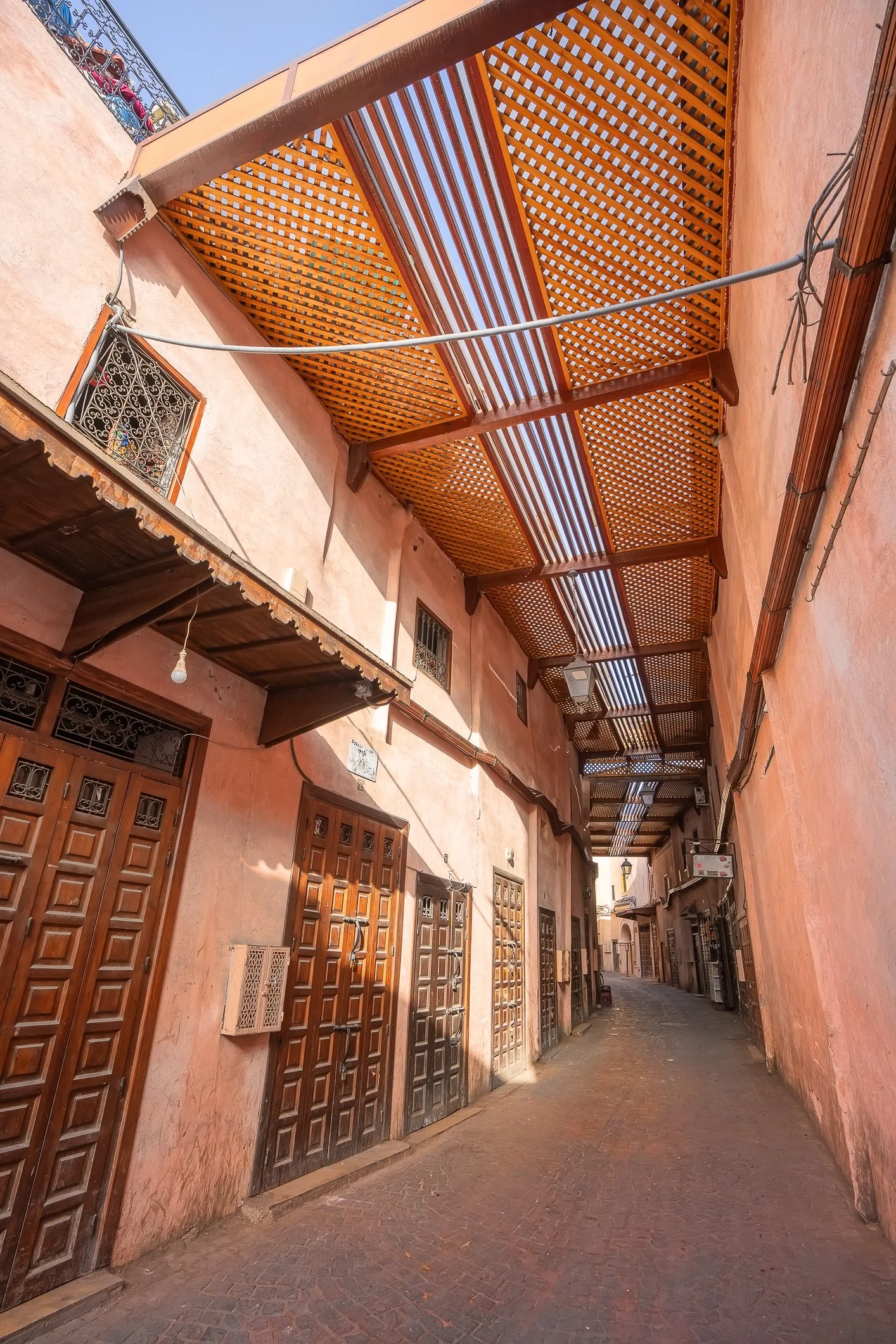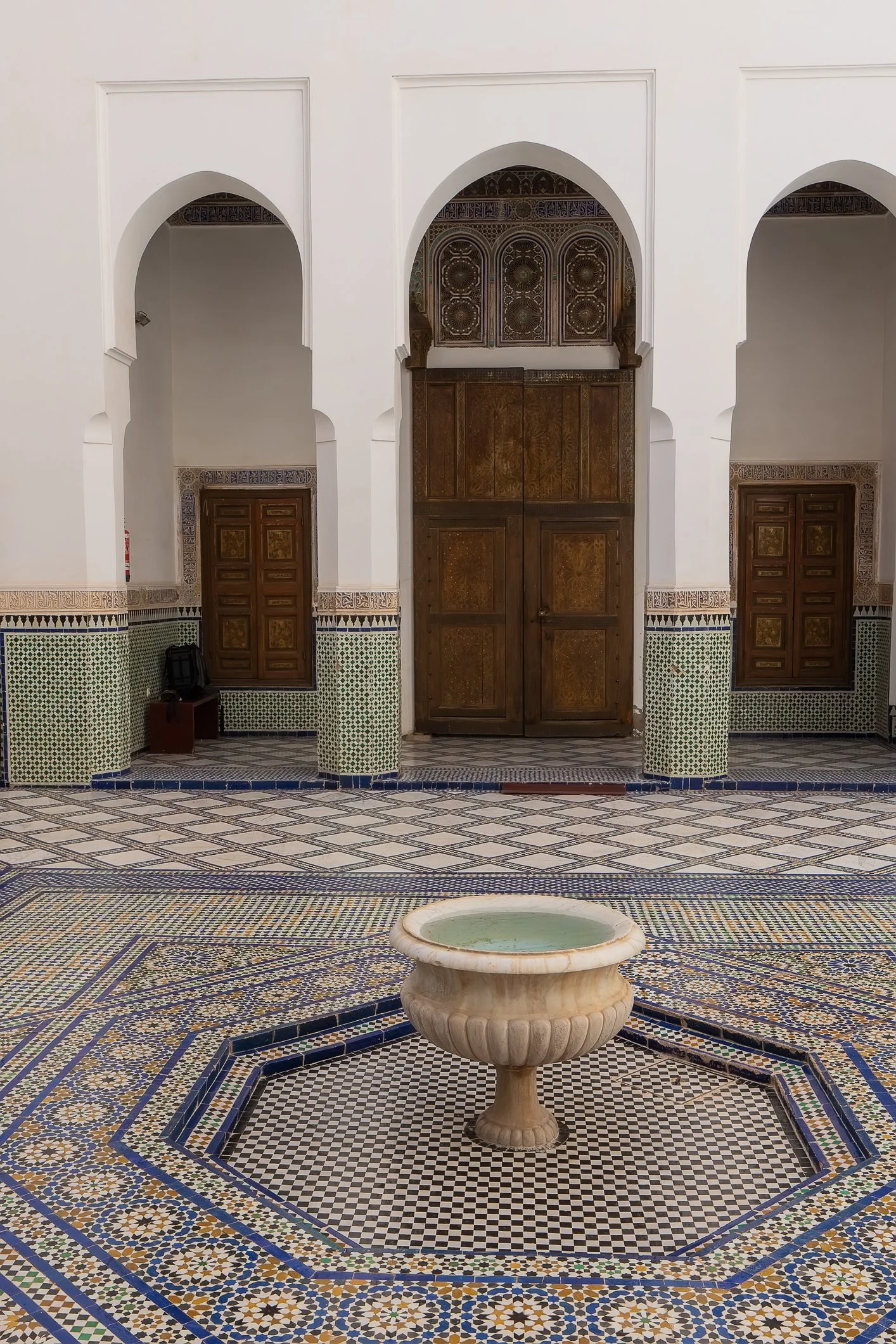We found ourselves back at Jemaa el-Fnaa tonight—again—drawn in this time by the promise of something a little different: steaming pots of babbouche, the famous Moroccan snails in spiced broth. You don’t really go hunting for them; the aroma finds you first. Dozens of tiny stalls, each with their own bubbling metal cauldrons, line a corner of the square, surrounded by locals slurping broth and picking snails from their shells.
Every vendor has their own recipe, passed down or improvised, but the basics are always there—an aromatic mix of herbs and spices that make the broth the real star. Think thyme, mint, aniseed, ginger, clove, pepper, cinnamon, liquorice root—sometimes a dozen or more ingredients steeped into something earthy, medicinal, and oddly comforting.
We barely have time to say hello before we’re handed two steaming hot small bowls. The snails are chewy and tender, not far off from mussels in texture, but much milder in flavour. It’s the broth that lingers—deep, herbal, and warming. You sip it at the end like tea.
They're cheap, filling, and strangely addictive. We end up going for seconds without thinking twice.
Dziś wieczorem znów trafiliśmy na plac Jemaa el-Fnaa — tym razem z jednym konkretnym celem: znaleźć małe stragany z wielkimi, parującymi garami pełnymi ślimaków w bulionie, czyli babbouche. Nie musieliśmy ich długo szukać — zapach nam podpowiedział. W jednym z kątów placu stoją rzędem te babbouche’owe stragany, a wokół nich siedzą lokalesi i turyści, pochłonięci wyławianiem ślimaków z muszelek i popijaniem bulionu.
Każdy sprzedawca ślimaków ma swój własny przepis na bulion, często przekazywany z pokolenia na pokolenie, ale podstawowe składniki zwykle się powtarzają: tymianek, mięta, anyż, imbir, lukrecja, cynamon, goździki, pieprz… czasem nawet kilkanaście przypraw i ziół gotujących się razem, tworzących wywar zaskakująco złożony — lekko ziołowy, lekko pikantny, mocno rozgrzewający.
Ledwo podchodzimy do wybranego straganu, a już mamy przed sobą po miseczce ślimaków. Dostajemy wykałaczki i zaczynamy cierpliwie wydłubywać miękkie ślimaki z muszelek. W smaku są delikatne, trochę może jak małże, a teksturę mają sprężystą, ale nie bardzo gumową. Po pożarciu ślimaków wypija się bulion, jak herbatę.
Babbouche to tania, szybka i naprawdę smaczna przekąska. Bez namysłu bierzemy po drugiej porcji.
And then we are off for something to drink. The fresh juice stands at Jemaa el-Fnaa are an unmissable part of the square’s chaotic charm. Lined up in neat rows during the day staying open well into the night, these brightly lit stalls temp with towering displays of oranges, grapefruits, pomegranates, prickly pears, or sugarcane. We came here quite a few times during our stay in Marrakesh, and tonight it is our farewell drink.
A potem idziemy się czegoś napić. Stragany ze świeżymi sokami na placu Jemaa el-Fnaa to nieodłączny element jego chaotycznego uroku. Ustawione w równych rzędach za dnia i otwarte aż do późnych godzin nocnych, te jasno oświetlone stoiska kuszą imponującymi wieżami z pomarańczy, grejpfrutów, granatów, opuncji czy trzciny cukrowej. Wpadaliśmy tu wiele razy podczas naszego pobytu w Marrakeszu, a dziś wieczorem przyszedł czas na nasz pożegnalny soczek.
Jemaa el-Fna at night has a completely different energy than during the day. The square fills up with food stalls, musicians, storytellers, and people everywhere. There’s the sound of drums in one corner, someone playing a flute in another, and the smell of grilled meat and spices in the air. It’s busy and a bit chaotic, but also really fascinating. You can just wander around, watch what’s going on, grab something to eat or drink, and take it all in.
Jemaa el-Fna nocą ma zupełnie inny klimat niż za dnia. Plac zapełnia się straganami z jedzeniem, muzykami, opowiadaczami historii i tłumem ludzi. W jednym miejscu słychać bębny, gdzie indziej ktoś gra na flecie, a w powietrzu unosi się zapach grillowanego mięsa i przypraw. Jest tłoczno i trochę chaotycznie, ale naprawdę robi wrażenie. Można po prostu chodzić, obserwować to wszystko, coś zjeść albo wypić i chłonąć atmosferę.


























































































































